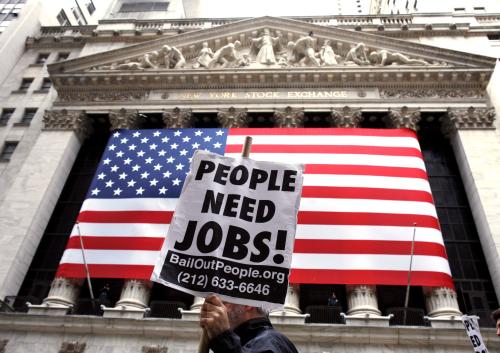In 1999-2000, the administration of President Clinton was celebrating an era of unusually strong economic growth with both strong productivity gains and employment gains. The unemployment rate was around 4 percent, inflation was low, the budget was in surplus and the stock market was high. Incomes had risen for all quintiles of the household income distribution. This was a New Economy, fueled by technological marvels, with the new century offering the promise of even greater things to come. This was a new day compared to the dismal assessment of Paul Krugman in his 1994 book, The Age of Diminished Expectations.
Unfortunately the dismal Krugman is back, and with reason. The first decade of the 21st century has not gone very well economically, including a really horrible recession. Unemployment is high, wealth is down, U.S. competitiveness is under siege and the prospects for growth are not thought to be very good. In a paper written in January 2010, Martin S. Feldstein paints a rather sober view of growth over the next 10 years. He believes that the economy will recover from the recession over time, allowing growth to exceed its long term potential growth rate for some years. On the other hand, since the economy starts with a very large trade deficit, this means that domestic production will have to exceed domestic purchases, if the trade deficit is to be reduced, holding down the growth of domestic spending. U.S. consumption and investment, he finds, will grow at only 1.9 percent a year over the next decade.
The New Normal or the Next Economy that people are talking about today is one where the U.S. population is aging, reducing labor force growth and putting pressure on Medicare and nursing homes. An economy where people will have to work longer before receiving smaller pensions. An economy where real living standards for the mean or median family will grow very slowly if at all.
This paper will not try to whitewash the economic picture nor will it offer a solution to all the problems. The challenges are real and not easily answered. The recovery is not yet assured and the possibility of a double dip remains a danger. And, even after the recovery becomes firmer, dealing with the trade deficit, an aging population and so on presents real barriers to rising living standards. I am more optimistic than Feldstein, however, and the main reason is that the pace of trend productivity growth looks pretty good. The chart below shows one estimate of that trend at 2.7 percent a year in the nonfarm business sector. I am not sure if that pace is really sustainable, but even at 2.5 percent a year, it means the size of the pie is growing solidly. With that rate of growth in the private economy, it is possible to achieve rising living standards for the broad population, we just have to figure out how to accomplish that.
The immediate economic problem is one of weak demand resulting in high unemployment and slack capacity, so this paper looks first at what happened in the recession and whether or not the policies that were followed to get out of the recession are in fact working or not. Is more stimulus needed and, if so, is it possible to provide it?
I then turn to more structural issues, looking at lessons from the recent history of U.S. economic growth, including patterns of employment and productivity by industry. One of the puzzles of the last decade is that increased productivity has not automatically translated into rising wages and incomes for all.
One explanation of the weak economic performance of the U.S. economy is that it is being undermined by competition from emerging economies, especially China. I explore the impact of increased globalization on the economy and try to understand why the income distribution has widened so much and whether globalization is to blame. This is a much-explored topic and I confine my analysis to a perspective on what the evidence seems to say.
In the next section I look more closely at the manufacturing sector, whether it can be saved, and what policies might help it do better in the future. Some of the policies to help manufacturing would also help the broader economy, but there are other possibilities and so in the following section I consider two additional policies to help the rest of the economy, before adding a short conclusion.







